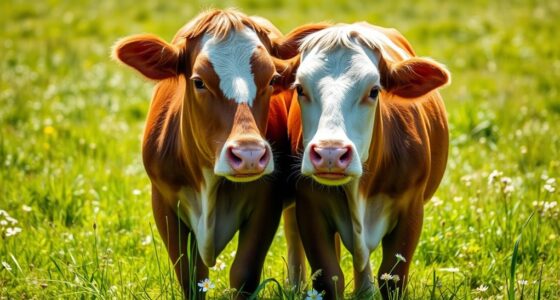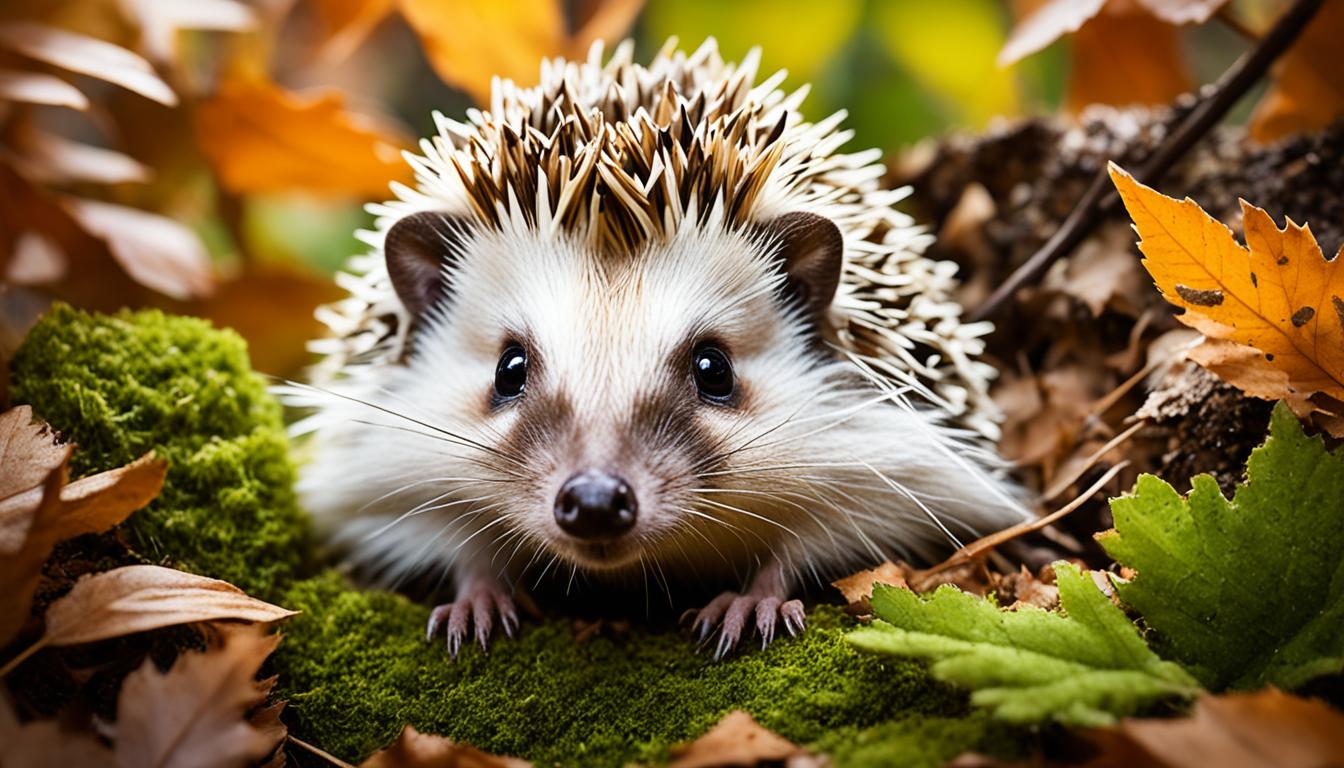Koalas mainly eat eucalyptus leaves, but they occasionally munch on other plants like acacias and melaleucas, especially when eucalyptus is scarce. These alternative leaves provide essential nutrients, helping koalas maintain their energy levels. They’re adapted to digest toxic eucalyptus thanks to special gut bacteria, but when needed, they’re resourceful enough to seek out different foliage. If you want to discover more about their unique eating habits, there’s plenty more to explore!
Key Takeaways
- Koalas occasionally eat leaves from acacia and melaleuca trees to supplement their diet when eucalyptus is scarce.
- Alternative plants provide essential nutrients, especially protein, during drought conditions or food shortages.
- Non-eucalyptus foliage helps maintain energy levels and overall health in koalas.
- Their occasional consumption of different leaves showcases their adaptability and resourcefulness in the wild.
- Understanding their diet beyond eucalyptus aids in habitat preservation and conservation efforts.

While eucalyptus leaves are a staple in a koala’s diet, these adorable marsupials occasionally munch on other plants, too. You might be surprised to learn that koalas don’t solely rely on eucalyptus for their nutrition. Although eucalyptus is high in fiber and low in protein, it’s also toxic to most animals. Koalas have adapted to digest these leaves effectively, thanks to their specialized gut bacteria. However, they do seek out alternative foliage when the opportunity arises, adding some variety to their diet.
Koalas primarily eat eucalyptus, but they also enjoy other plants, showcasing their adaptability in the wild.
In addition to eucalyptus, koalas sometimes snack on leaves from other trees, like acacias, melaleucas, and some fruit trees. While these alternative food sources might not be as common, they can provide essential nutrients that complement koala nutrition. You might wonder why koalas would choose to munch on something other than eucalyptus. Well, during periods of drought or when eucalyptus leaves are scarce, they’ll turn to these other plants for sustenance. This adaptability helps them survive in an ever-changing environment.
Acacia leaves, for instance, offer a protein boost that can help koalas maintain their energy levels. These trees are native to Australia and often grow in similar habitats as eucalyptus, making them an accessible choice. Melaleuca leaves can also be a part of their diet, particularly when eucalyptus is less available. You’ll find that koalas are quite resourceful when it comes to finding food in their habitat.
It’s important to remember that while koalas can eat these alternative foliage options, eucalyptus remains their primary food source due to its abundance and the nutritional value it provides. Koalas have evolved over millions of years to thrive on eucalyptus, and their digestive systems are finely tuned to break down its fibrous structure. So, while occasional munching on other plants may occur, it’s not a frequent occurrence in their daily lives.
Understanding what koalas eat outside of eucalyptus helps paint a more complete picture of their diet and habitat needs. If you’re ever lucky enough to see a koala in the wild, keep an eye out for them exploring their surroundings. You might catch them sampling various leaves, showcasing their adaptability and resilience in the beautiful Australian landscape. Additionally, their ability to thrive on a limited diet highlights the importance of regular home cleaning to ensure a healthy environment in their natural habitat.
Frequently Asked Questions
How Do Koalas Digest Eucalyptus Leaves?
Koalas digest eucalyptus leaves through a specialized process. Their unique stomachs contain compartments that break down tough fibers and toxins in the leaves. With a slow digestion process, it allows them to extract essential nutrients despite the low energy content of their koala diet diversity. This adaptation helps them thrive on eucalyptus, making their digestion efficient enough to support their needs, even though it’s a challenging food source.
What Is the Nutritional Value of Eucalyptus Leaves for Koalas?
Eucalyptus leaves might seem like a feast fit for a king, but for koalas, they’re a nutritional puzzle. You’re looking at low protein and high fiber, which means koala nutrition relies heavily on their specialized digestive system. While eucalyptus benefits them by providing essential oils and some antioxidants, the leaves lack crucial nutrients. This unique diet makes them dependent on eucalyptus, highlighting their role as specialists in a world of dietary diversity.
Are Koalas Social Animals or Solitary?
Koalas are primarily solitary animals, often seen enjoying a solitary lifestyle. Their social behavior is limited, as they prefer to roam alone in their territories. While they can communicate through vocalizations, especially during mating season, they generally avoid forming tight-knit groups. You’ll find them mostly resting in trees, focusing on their individual needs rather than social interactions. This solitary nature helps them conserve energy, vital for their eucalyptus-based diet.
What Threats Do Koalas Face in the Wild?
Koalas face significant threats in the wild, with habitat loss and predator threats looming large. Imagine a lush forest filled with trees, then picture it shrinking, leaving koalas vulnerable. As their homes disappear due to development and climate change, they’re increasingly exposed to predators like dogs and foxes. You can see how these challenges put immense pressure on their survival, making conservation efforts even more vital for these iconic animals.
How Long Do Koalas Typically Live?
Koalas typically live around 10 to 12 years in the wild, but they can reach 18 years in captivity. Maintaining their habitat is vital for their survival, as urbanization and deforestation threaten their existence. You can support koala conservation efforts by advocating for the protection of their natural environments and participating in local initiatives. By doing so, you help guarantee that these iconic marsupials can thrive for years to come.
Conclusion
While eucalyptus leaves make up the bulk of a koala’s diet, these adorable marsupials occasionally munch on other plants, like acacia and tea trees. It’s fascinating to note that a koala can consume up to a kilogram of eucalyptus daily! However, as their habitats shrink, these unique animals face greater challenges. Protecting their environment is vital—after all, the survival of these gentle creatures depends on our actions today. Let’s help guarantee future generations can enjoy their charm!










